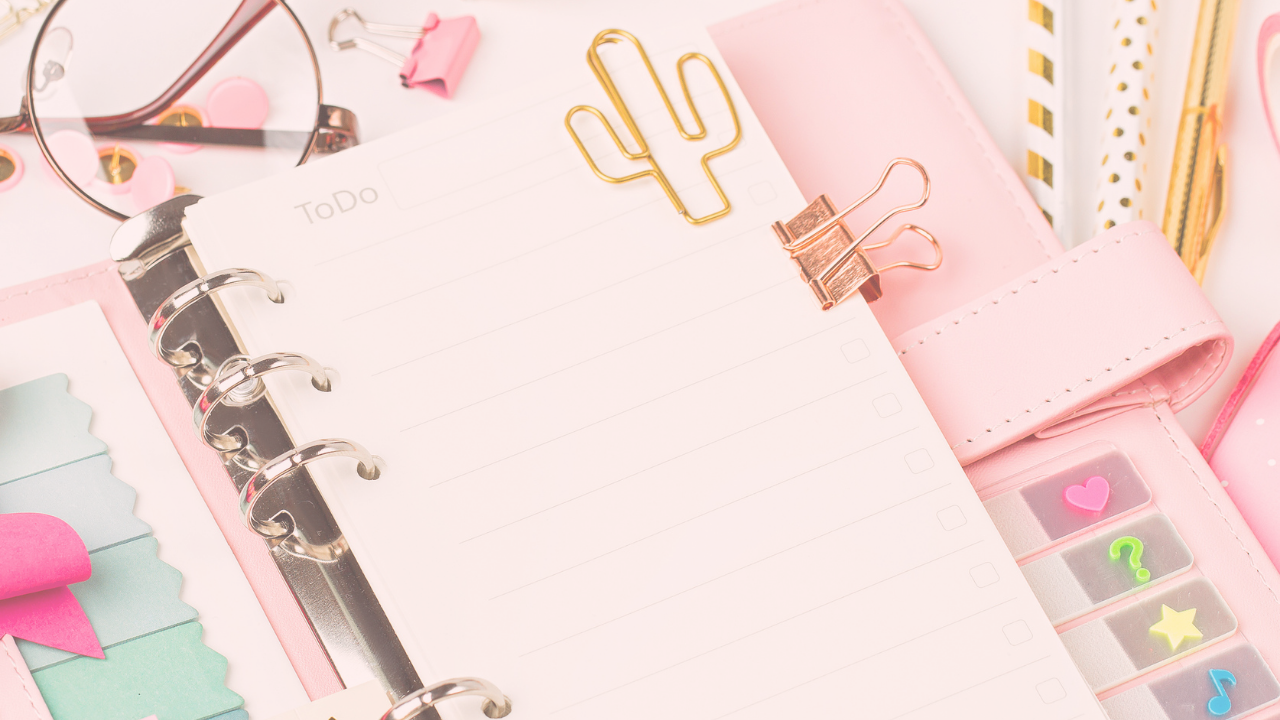My Top 3 Paper Planner Tips

Whether you’re partial to paper planners, digital planners, or electronic planners, there are special considerations to think about with each of them. (For a more detailed explanation of all three types, head to my blog post dedicated to choosing your new planner.)
This post is all about sharing my top 3 planner tips for those women who love their paper planners and what you need to consider before choosing your next paper planner!
Tip #1: Get Clear on Your Planner’s Purpose
First and foremost, you need to get a clear understanding of the purpose your paper planner is serving.
A paper physical planner should serve one and only one purpose — to tell you what you need to be doing and when you are doing it.
Your paper planner should have things like the details of your schedule, your appointments, and what specific activities you have intentionally planned on doing each day.
I know from personal experience — before I created the TOP Planner — that it is super easy to get sucked in by those beautiful paper planners that seem to do it all! There is space for calendars, fitness planning, meal prepping, couponing, homework scheduling, etc. And that seems really appealing!
But if you’re currently overwhelmed with your paper planner, I can almost guarantee it’s because that planner is trying to do too much.
The beauty of using a weekly planner without all of those extra bells and whistles is that you’re far less likely to get distracted and will really be able to focus on those core things you need to know: what you're doing and when you're doing it.
Tip #2: Pay Attention to Planner Layout & Size
The second thing you should consider as a paper planner user is the layout and size of your planner.
When it comes to layouts, there are a lot of flavors of planners out there!
There are paper planners with two-page spreads for every day, two-page spreads for every week, those with open blocks for each day, those with lined blocks, etc. Truthfully, the layout options can seem endless.
If you are ready to own and lean into the number one way to plan and manage your time, which is weekly planning, you need to make sure that the paper planner you pick matches that style of planning.
The layout I recommend for you is a spread with a weekly view where each day has its own column, and each of those columns has actual times listed. Having times in your layout allows you to easily see across the whole week when you have open slots of available time.
The other thing I really encourage is to make sure your planner also has a monthly spread available so that you can get the next-level view of everything you have going on for monthly planning.
The second part of this tip is choosing a paper that is the right size for you, and this is a very personal decision.
You need to think about your lifestyle. Will you be carrying this planner around with you? And you need to think about the amount of information that you need to put into your planner to determine the right size for you.
Tip #3: Decide on a Dated vs. Undated Planner
Another thing to consider when choosing a paper planner is whether you want it to be dated or undated. And something else tied in with this decision is how you want your planner to be bound. Meaning, do you prefer a planner held together with a coil binding, in a binder with rings, or with discs? Because some allow you to add or take out pages and others do not.
In a dated planner, the pages already have all the dates for you. We typically see a surge in buying these planners at the beginning of a new year or a new school year.
Dated planners work really well for certain types of people. For someone who is always getting a new planner at the start of the year as a way to start fresh, this can be great for you.
The disadvantage of a dated planner is that, if you decide to dive into something like weekly planning in April or July, those dated planners limit how much of the planner you can really make use of.
This also leads to a disadvantage of coil-bound paper planners. If you have a 2022 paper planner that is bound this way and you get to August or September when you’re ready to add things to your planner for early 2023, you have to work from two yearly planners.
If you are someone who is hard and fast about wanting a dated planner, I encourage you to make sure it's one that is in the form of a three-ring binder or a disk binder that allows you to add in the pages that you need.
I used a dated planner for years, but when I developed the TOP Planner, I consciously chose to make it undated, so that no one would ever be in a position of needing to buy inserts or buying a planner already knowing that there are months that you won't be able to use.
Bonus Tip: Look for Bookmarks
One additional thing I recommend you look for in your paper planner is some form of a bookmarking capability that allows you to quickly open to your current week.
The Top Planner, for example, comes with a moveable see-through, plastic bookmark that also doubles as a ruler. It just sticks out a little bit at the top of the planner but makes sure that, even when the planner is closed, it’s easy to open it right away to correct the week.
For even more tips on all things priorities, time management, organization, and productivity, check out more blogs or podcast episodes.


